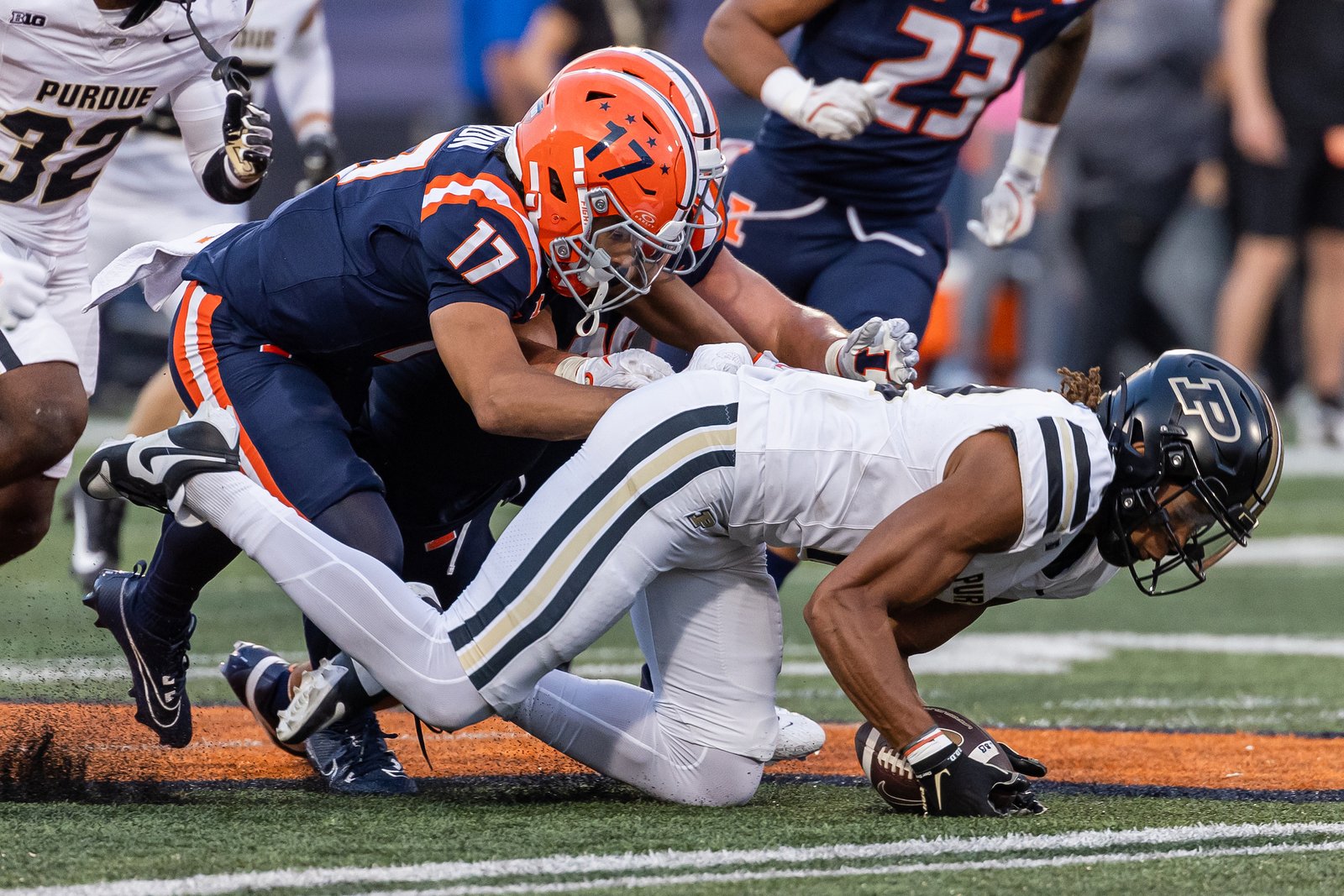
On Saturday, in three separate college football games, I saw a personal record three onside kicks recovered by the kicking team. Our once-beautiful and vibrant (OK, maybe it was never beautiful or vibrant) onside kick culture has suffered some real blows in the last year. The NFL effectively banned surprise onside kicks with its new kickoff rule, which allows onside kicks only in the fourth quarter and also requires the kicking team to declare they are onside kicking. But yesterday, these guys kept the culture alive. Let’s consider their onside kick strategies:
1. Rocket It Right Off The Other Guy
I’ve long enjoyed the video game coach stylings of Oregon’s Dan Lanning, and wasn’t at all surprised to learn that their second-quarter kick against Ohio State was intentional. “I felt confident in our…in our kickoff option that there’s a great chance that we might be able hit one of their players and get the ball to bounce back,” Lanning said after Oregon’s 32-31 win. I was surprised by his confidence in Oregon’s special teams. The Ducks had just scored their second touchdown of the game, but because of a botched snap on the first PAT attempt, a missed field goal, and now a failed two-point conversion, they still trailed the Buckeyes 14-12.
But on the touchdown pass, Ohio State had been assessed a 15-yard facemask penalty, and Lanning chose to enforce it on the ensuing kickoff. Desperate for special teams redemption, Oregon kicker Andrew Boyle (who shares kicking duties with another guy named, incredibly, Atticus Sappington) drilled the football into Ohio State safety Caleb Downs. It ricocheted off Downs and Ducks wide receiver Roger Saleapaga recovered to set up another Oregon score.
I am naming the line-drive strategy Saturday’s winner and a model for all future onside kicks. Simply doink it off the guy in front of you. Rebounding wins championships.
2. Make The Football Do Spinny Devil Magic
A week after being upset by lowly Vanderbilt in Nashville, Alabama sought a simple and pleasant win against lowly South Carolina. The win they got was neither. The Gamecocks, who led the Crimson Tide entering the fourth but had given up the lead after fumbling and missing a field goal, had just scored a toe-tap touchdown to close the Alabama lead to 27-25. Their two-point conversion attempt failed, so South Carolina turned to eerie means. I have so much sympathy for the Ohio State player who had a football clanked off his body. Though this onside kick (around the 20:40 mark below) was hardly a surprise, I have equal sympathy for the Alabama players trying to corral this football as it spun, evasively, off all of them and back into the hands of South Carolina.
Alas! On the next possession, South Carolina QB LaNorris Sellers threw a pick in the end zone, and the Crimson Tide escaped. The Gamecocks should negotiate better terms on any future deals with the devil.
3. Hope Momentum Is Real And That It Is On Your Side
The concept of momentum has vexed and divided the world of sports media. “It’s an arbitrary, abstract idea that you can mold into just about anything you want to tell the story you’re looking to tell,” Bill Barnwell once wrote in an anti-momentum treatise. Correct! And I will mold it to tell the story of the second half of yesterday’s Purdue-Illinois game, which ended 50-49 in double overtime. After Purdue stormed back from a 27-3 third quarter deficit to shrink the Illini lead to 40-35, it seemed fated that they would successfully recover their onside kick attempt. Nothing about the technique of this onside kick (13:40 below) stands out to me, but the onside kicking strategy wasn’t relevant. Anything Purdue could have tried at that moment was bound to be successful. Momentum was on their side.
The Boilermakers’ comeback bid fell short in overtime: Purdue scored a touchdown to keep pace with Illinois, but quarterback Ryan Browne was sacked on a two-point conversion attempt to win the game. This was essentially the only stop Illinois was able to make in the second half. Momentum must have swung the other way.






